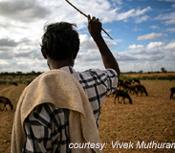Global Assessment Report on Disaster Risk Reduction 2025
The global cost of disasters is growing: The economic burden of disasters is intensifying. While the direct costs of disasters averaged $70–80 billion a year between 1970 and 2000, between 2001 and 2020 these annual costs grew significantly to $180–200 billion. But the real cost is far higher. Disaster costs now exceed over $2.3 trillion annually when cascading and ecosystem costs are taken into account. The Global Assessment Report (GAR) 2025: Resilience Pays: Financing and Investing for our Future highlights how smarter investment can re-set the destructive cycle of disasters, debt, un-insurability and humanitarian need that threatens a climate-changed world. When disasters occur repeatedly, economic growth often slows and debt increases. Developing countries, particularly small island developing states (SIDS) and least developed countries (LDCS), face the dual challenge of higher exposure to hazard risk and limited access to resources for risk reduction. In such situations, it becomes increasingly expensive to insure or otherwise transfer risk, and more money is spent on humanitarian responses as disasters are not prevented. But this is not inevitable. To create a more stable investment climate, governments, multilateral institutions, the private sector and households need to rethink and realign their investments to better protect current and future assets. Developing a clear, integrated risk financing approach can help address these challenges and open a pathway toward long-term financial and economic stability.








